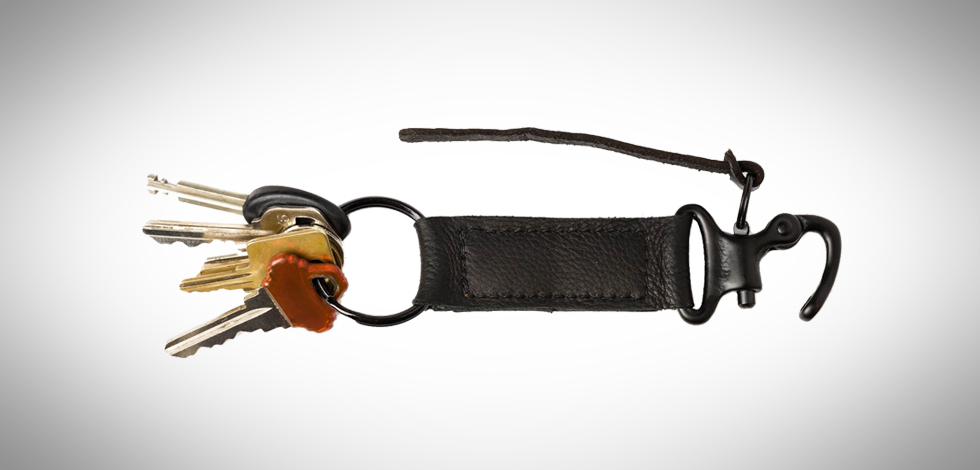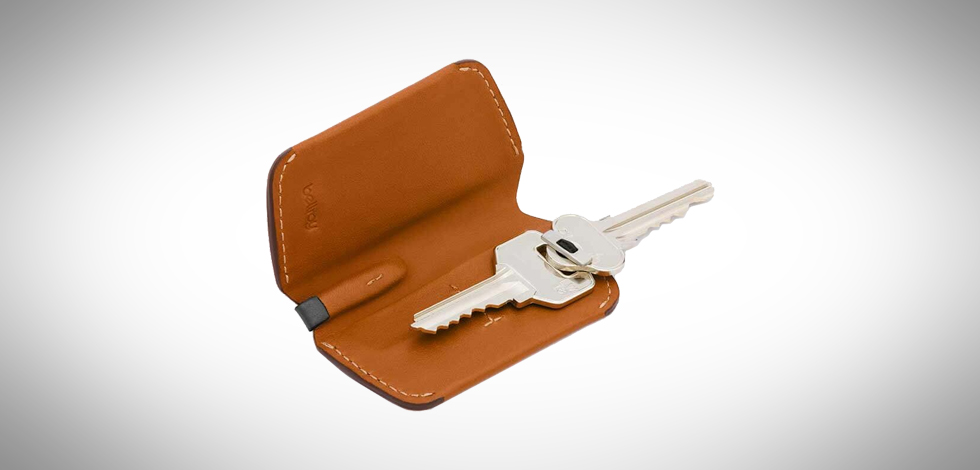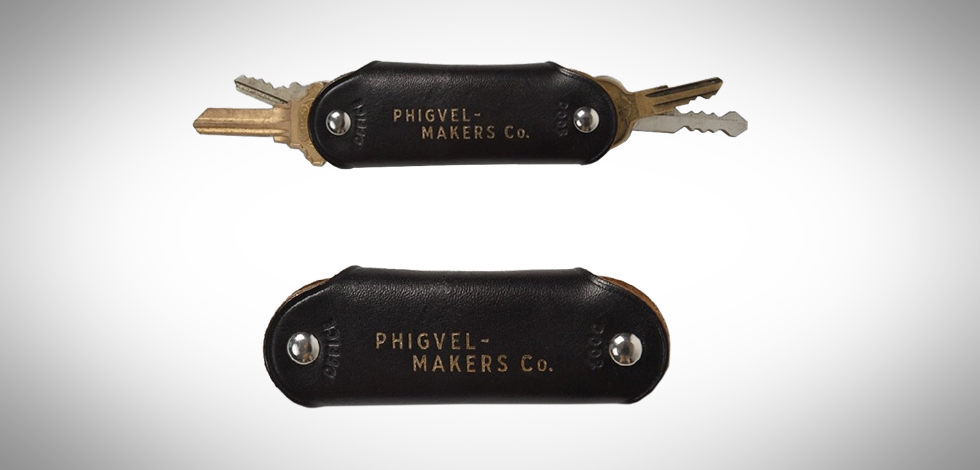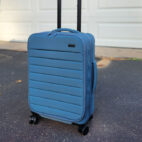
EDC

We carry them every day. We can't do without them. And yet, they can be some of the most frustrating items in our EDC setup. Love 'em. Hate 'em. Either way, you can't chuck them. But with our Carry 101 guide, you can unlock a better way to carry them.
Why Carrying the Old Way Isn't So Cool
Traditionally keys have been dumped in a bag or pocket and left to their own devices. Unfortunately, they're not so good at keeping a low profile...

That chinking noise!
When we stroll, mosey or saunter wherever we're going, our legs inevitably have to sway back and forth, thus jiggling keys in our pocket and emanating that chink chink noise that can become steadily infuriating.
Scratching your valuables
Keys have teeth - and they bite. If your phone or wallet shares bag or pocket space with your keys, it's a lot easier for these valuables to get scratched.
Pants and legs are tasty too
Not only can keys scratch up pocket contents, they can gnaw on your pants, causing annoying and unsightly damage. They're also uncomfortable to carry wedged in a pocket, with the teeth biting into your leg when you move or sit.
Looking sharp (but not the way you want)
Key bulge ruins the form of a nice fitted suit or jeans. Their unyielding forms can stick out at all angles, turning a suave silhouette into a distraction.
Quick access...not so much
Having to rummage around in a bag or pocket can severely hinder quick access to different keys as needed. Keys are also great at scurrying out of sight and getting tangled up or lost amongst other pocket or bag items.
Minimizing Your Carry Setup
The first step to creating some calm in the midst of key chaos is trimming down your key carry to just the essentials. Examine your current key carry setup and remove anything you no longer use or need, whether it’s keys, small tools, charms or the like.

A useful tip: you can trim your carry further by removing loyalty card key fobs and store their barcodes on your phone (there are a variety of apps to help you with this).
You can then group the remaining items according to use (for example work keys, home keys, etc.). You can incorporate quick-release options like carabiners or the True Utility Key Ring system in order to easily remove or add keys to suit changing day-to-day needs.

Now that your carry setup is running leaner, let's take a look at some ways to organize and carry keys...
Key Organizers
Key organizers can hold multiple keys in a tidy, accessible unit. Check out some top picks below.
Available in classic and extended options, KeySmart helps hide key teeth and includes a loop for attaching car keys or other items (e.g. a lanyard or small multitool). It can be partnered with optional accessories such as a USB flash drive or bottle opener, and is expandable to include up to 100 keys.

True Utility TU245 Key Ring System
This key ring system features a shackle and clips. The shackle holds up to five keys in order, while the clips can be used to attach additional keys or small items.

After identifying the type of keys you have, Keyport supplies blades (key blanks) which your local locksmith can use to duplicate your current keys. Blades fit in the Keyport Slide 2.0 and are interchangeable. The retractable design allows for one-handed access and also accommodates optional Keyport inserts including a USB flash drive, bottle opener, pen, mini light, and bar code holder.

This simple design is available in regular and extended lengths and different sizes for carrying up to three, six or nine keys. It doesn’t necessarily protect other pocket items from scratches, but access is quick and easy with no jingling.

The Orbitkey comes in a choice of different band materials to suit personal tastes. In addition to keys, it accommodates Orbitkey accessories such as a USB flash drive and bottle opener.

While the design is bulkier than other options, it stops jingling, provides straightforward access, and can double as a bottle opener.

Similar in design style to a Swiss Army knife, the Key Caddy fits up to eight keys in a jingle-free format, with a loop for car keys or small tools.

Featuring a minimalist design, Blockey comes in original and extended versions, keeps key teeth covered, and carries three to five keys depending on the size you choose.

You can DIY your own key organizer by modifying a multitool. Find instructions here.

Key Hooks and Clips
Key hooks and clips can be used to secure keys and other small items individually, as well as key organizers and keychains with sets of keys. As with any carry method there are pros and cons.
-Hooking them on a belt loop or bag out in the open provides easy access, though there is a greater risk of losing items if the hook or clip becomes detached. There is also the slight potential of items to snag on branches in passing (avoidable, but worth bearing in mind).
-For greater security hooks and clips can be suspended inside a pocket or bag, though this decreases quick access.
-It's also a good idea to alternate between belt loops to avoid wear and tear from heavy carry setups.
-Lastly, it may look unprofessional having a lot of keys and other small items dangling from your belt or bag, so whether you use these particular methods will depend on your working environment and personal style.
This belt loop key hook comes with a leather tab for your contact details, and doubles as a bottle opener. Additional split rings can also be added for further carry options.

This double-gated carabiner can be used to attach keys and other items to bags or belt loops. Each gate can be locked with plastic sliders to secure the contents.

TEC Accessories P-7 Suspension Clip
The P-7 clips onto the top edge of your pocket, suspending attached keys partway in the pocket space to reduce pocket bulge. It can also clip inside bags for quick access.

Obstructures small stainless steel pry/open pocket tool
This multifunctional tool uses an included cable ring to attaches keys, and can hook on a belt loop or inside a pocket to suspend keys.

Wizard Industries Quick Release Key Ring
Keys can be quickly and easily attached or removed from this key ring, which can slide onto a pocket, belt loop or bag.

A simple carabiner and keyring combination for quickly attaching or removing keys from a belt loop or bag.

Straightforward to use, the DSPTCH Key Chain removes and attaches easily through the carabiner, and includes paracord for survival or emergency use.

The three carry options in this set feature quick-release magnetic Fidlock connectors to make attaching and removing keys fast and easy. Alternate between belt clip, snap loop and gated D-ring options to suit different needs.

The Mega Dangler serves as a durable key hook for suspending keys in a pocket, while also offering other useful features such as a bottle opener, screwdriver, and semi-sharp cutting edge. The problem? The Mega Dangler is made in limited batches, is extremely popular, and sells out quickly.

The elegant lines of this key hook add a little style to your key carry. Made in Japan, there are a variety of models to choose from.

Keyrings
Keyrings won’t necessarily get rid of clinking but they are a useful means of keeping keys together. They also offer the flexibility to be used in combination with other carry methods or by themselves.
A great option for saving fingernails, the FREEKey can be easily pressed open to remove or add keys.

The Objekten Keyring features a recycled leather loop that doubles as a smartphone stand. See it in action here.

Made from steel aviation wire, this keyring features a brass screw closure that makes it easy to attach and remove keys, as well as attach or remove the keyring from a belt loop or bag.

The Keybrid reduces bulk by combining a key blank and keyring in one. Available in a choice of blanks to duplicate your existing key, it can attach to a belt loop, bag, or pocket edge. It can also double as a money clip.

Keychains
Keychains are a simple means of carrying one or more keys. Easy accessibility is a primary feature with this carry method. Keychains can be hooked onto a belt loop or bag so keys remain at the ready when needed. Drawbacks are that keychains can look unsightly with a large bunch of keys attached, plus the weight of many keys in a specific area can cause wear and tear to belt loops or bag webbing. As such, it's a good idea to alternate which loops or webbing sections you use. Also consider going with a keychain that's long enough to allow keys to be tucked into your pocket to reduce clinking.
Recycled Firefighter Chauffeur Key Clip
The Chauffeur Key Clip features reflective webbing to boost visibility, and is designed to hook on a belt loop with just enough length to store keys in a back pocket so they won't jingle while walking.

The Keyper features Velcro attachment for easily securing it to a belt or bag webbing. It includes a snap hook and key ring and is available in a choice of colorways.

Apolis Transit Issue Key Chain
The Transit Issue Key Chain features a durable combination of leather and mil-spec hardware. Elegant and understated, this handsome piece can transition from work to leisure environments with ease.

ARKTYPE RMK (Riflesnap Magnet Keychain)
Handwoven with Type III 550 Paracord, the RMK includes an HK snap hook for securing it to a bag or belt loop. A key feature is the magnetic clasp that enables convenient and quick access to keys without having to detach the entire keychain.

KILLSPENCER Quick Release Keychain
This handsome keychain is constructed with premium full-grain leather and incorporates a quick-release mechanism for easily attaching it to a bag or belt loop.

Key Sleeves, Wallets and Cases
Sleeves, wallets and cases are a good option if you want a balance between access and protection from key teeth. There are plenty of options to suit personal tastes and needs, both in form and function. A simple DIY version can be made at home using the finger of an old glove, while others look right at home in a business setting. Some favor organization, but others may give access or versatility the edge. Before picking a particular carry piece, decide what features you value most in key carry, then choose a piece that meets those requirements. The pieces below are great inspiration.
The Bellroy Key Cover provides a sleek and stylish way to carry keys, while keeping them away from other pocket or bag valuables. Made from vegetable-tanned leather, the Key Cover features an easy-access magnetic closure and an exterior loop for attaching a car key or fob. It's available in Standard and Plus sizes that hold up to four and eight keys respectively.

Bringing classy carry to your keys, this case keeps keys stylishly secure but accessible, and away from other pocket or bag items.

Phigvel Makers Co. Leather Key Swivel Case
This leather key case stores keys inside to protect other items from scratches, and has the words "Door", "Office", "Home", and "Ignition" embossed at the four corners to assist with key organization.

Available in a choice of models, these spring deployed automatic key fobs work with the simple press of a button. They are designed to flick a key out like a switchblade and come with a choice of uncut key blank to duplicate your original key.

The KeyClip serves as a key holder and wallet in one, storing keys, cards and cash.

Lanyards and Neck Chains
Lanyards and neck chains can be useful for carrying one or two keys, though two keys may result in having to put up with clinking. If you need to carry a lot of keys, it's better to go with another option. They may be uncomfortable (especially if wearing under your clothing against your skin), but they keep keys at the ready and make them hard to lose. There are a lot of materials and styles to choose from to meet your own needs. This Mudder lanyard set features a variety of colors and retractable reels, allowing color coding organization and reducing the likelihood of having to remove the lanyard in order to use a key.

Bluetooth Trackers
While they won't help you carry keys better, Bluetooth trackers can help you locate lost keys. Options such as the Tile Bluetooth tracker can be conveniently used in conjunction with carry methods. Tile can track keys through an app, and can also send out a sound alert to help guide you to their location.

–
And that's about it… how do you carry your keys?





 Carry Awards
Carry Awards Insights
Insights Liking
Liking Projects
Projects Interviews
Interviews










